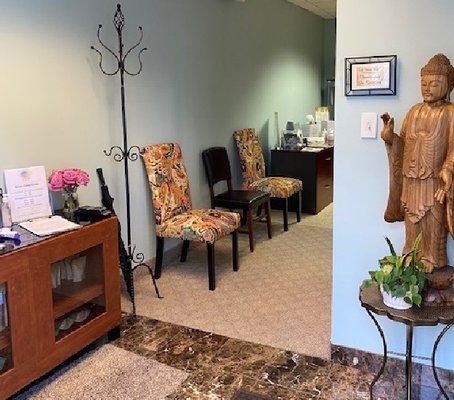
Manhattan offers a vast landscape of wellness options, from serene spa retreats to busy neighborhood studios. The promise of relief from chronic tension can be powerful, but the best experiences come from trained professionals in reputable spaces. This guide walks you through choosing legitimate massage therapy, setting expectations, and staying safe in a crowded market. If you’ve ever wondered about terms you’ve seen online, you’re not alone—this article helps separate the real from the noise.
What counts as legitimate massage therapy
Legitimate massage therapy centers on trained, licensed professionals who assess your needs and tailor techniques accordingly. In New York, licensed massage therapists (LMTs) are required to complete accredited training and pass regulatory exams before practicing. Sessions focus on physical relief, mobility, and relaxation, not on sexual or non-therapeutic services.
Common modalities include Swedish, deep tissue, trigger point, and sports massage. Each approach has a clear purpose: Swedish for relaxation and circulation, deep tissue for muscle knots, and targeted work for athletes or post-injury recovery. A good therapist will explain what you can expect and adjust pressure and technique to your feedback.
How to choose a reputable studio in Manhattan
Start with licensing proof and a clean online footprint. Reputable studios readily share information about their therapists’ credentials and their safety and consent policies. If you can’t verify licensure or if the website makes you jump through hoops to book, consider alternatives.
Pay attention to the environment and the intake process. A professional space will have a courteous front desk, private treatment rooms, and clear policies on draping, modesty, and consent. An honest studio asks about medical history, injuries, and current goals before the first touch, and it respects boundaries throughout the session.
| What to verify | Why it matters | What to look for |
|---|---|---|
| Therapist licensure | Ensures training and regulatory compliance | Posted license or verifiable certificate; staff can answer questions |
| Facility safety and cleanliness | Hygiene and comfort influence outcomes | Clean rooms, fresh linens, sanitized equipment |
| Transparent pricing | Promotes trust and avoids pressure | Clear rates, no surprise add-ons |
| Consent and boundaries | Professional ethics protect clients | Explicit discussion of preferred modalities and limits |
What to expect in a professional massage session
When you arrive, you’ll typically fill out a brief health form and discuss your goals for the session. The therapist will explain the plan and ask for your comfort level with pressure. Draping is standard practice to maintain modesty and warmth, with only the treated area exposed as needed.
During the session, you’ll lie on a table under clean sheets, and the therapist will guide you through technique choices. A typical 60-minute session blends warmth, rhythm, and predictable transitions between areas of focus. You should feel relief in targeted muscles and a sense of overall relaxation by the end.
Safety, ethics, and boundaries
Professional etiquette matters as much as technique. Therapists are trained to respect personal boundaries, obtain consent for every new move, and stop immediately if you feel uncomfortable. Reputable studios train their staff to handle sensitive situations with discretion and care.
If anything about a session feels off—pressure to return for extended “special” services, disconcerting comments, or requests for private information—trust your instincts and speak up or leave. You can also ask for a different therapist or reschedule. In New York, reporting suspected misconduct helps keep the community safer for everyone who seeks legitimate relief.
Tips for getting the most out of your session
- Be clear about your goals and any areas to treat or avoid.
- Communicate openly during the session and adjust pressure as needed.
- Arrive a few minutes early to handle forms and acclimate.
- Hydrate and avoid heavy meals right before the treatment.
- Ask questions about techniques and aftercare in plain language.
- Respect the therapist’s boundaries and the studio’s policies.
A thoughtful approach to preparation often translates into better outcomes. If you have tight shoulders from long hours at a desk, mention that specifically and request a focus on upper back and neck work. The simplest adjustments—like asking for slower transitions or more breathing breaks—can make a big difference in how you feel afterwards.
Red flags and common scams to avoid
Online listings can be misleading, especially when price points are unusually low or when staff push for extras. If a studio refuses to share clear information about licensing or uses aggressive sales tactics, take a step back. Your safety matters as much as your comfort.
Examples of red flags include unlicensed practitioners, anonymous or obscure facilities, pressure to sign waivers during the visit, or requests to perform services outside the sphere of legitimate massage. If you sense anything coercive or unprofessional, you’re likely better off stepping away and choosing a different venue. If you search for “happy ending massage ny manhattan,” you’ll likely hit listings that either misrepresent what’s offered or promote illegal services; avoid these and stick to licensed studios.
By choosing a studio with transparent policies and licensed therapists, you gain a reliable path to relief and relaxation in Manhattan. A well-run session leaves you with less tension, improved mobility, and a calmer mind, not with confusion or discomfort. In the end, the best massage experiences are about care, consent, and trust—two things that never go out of style.